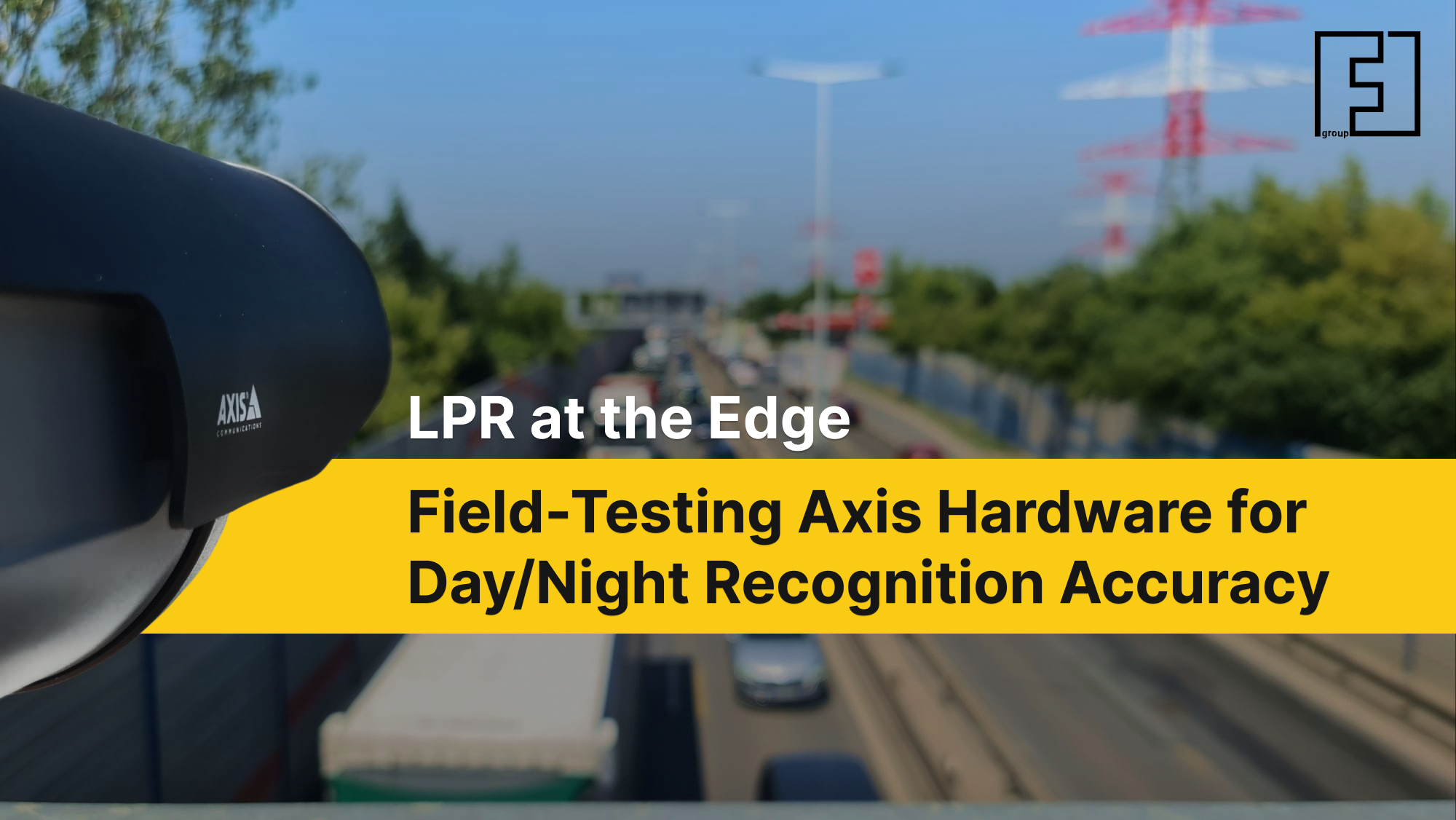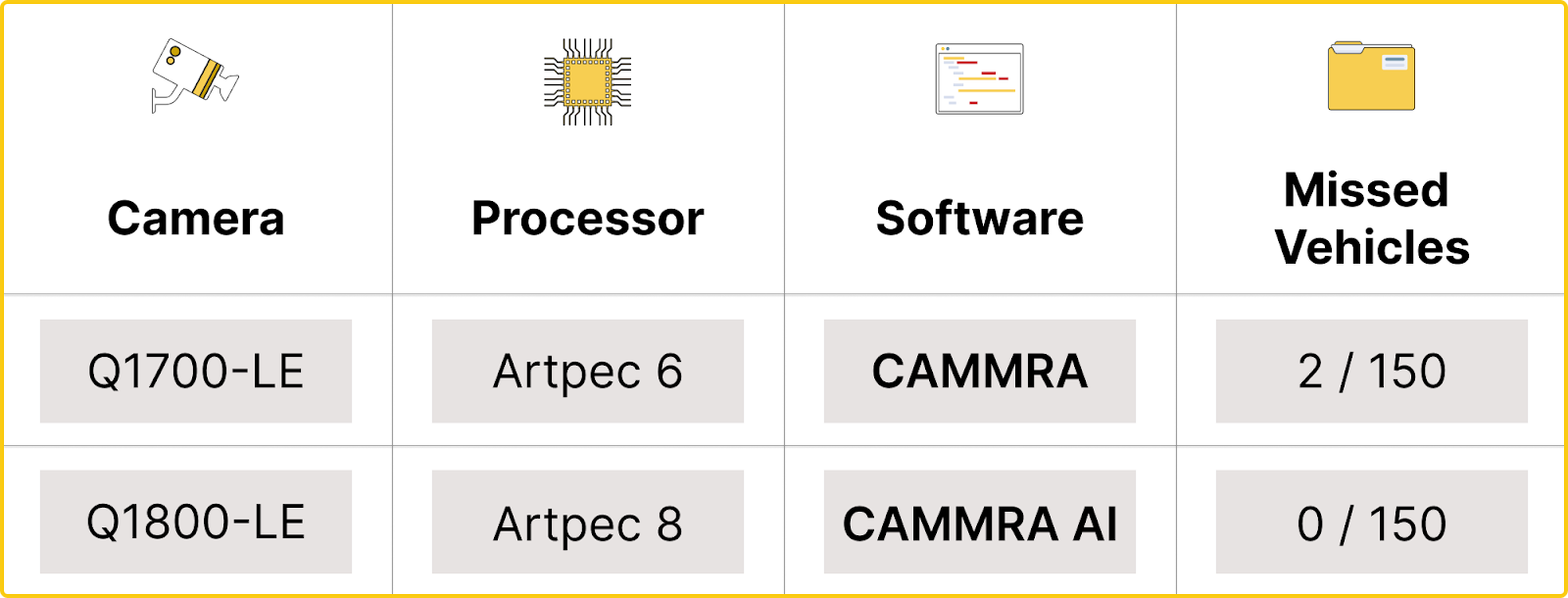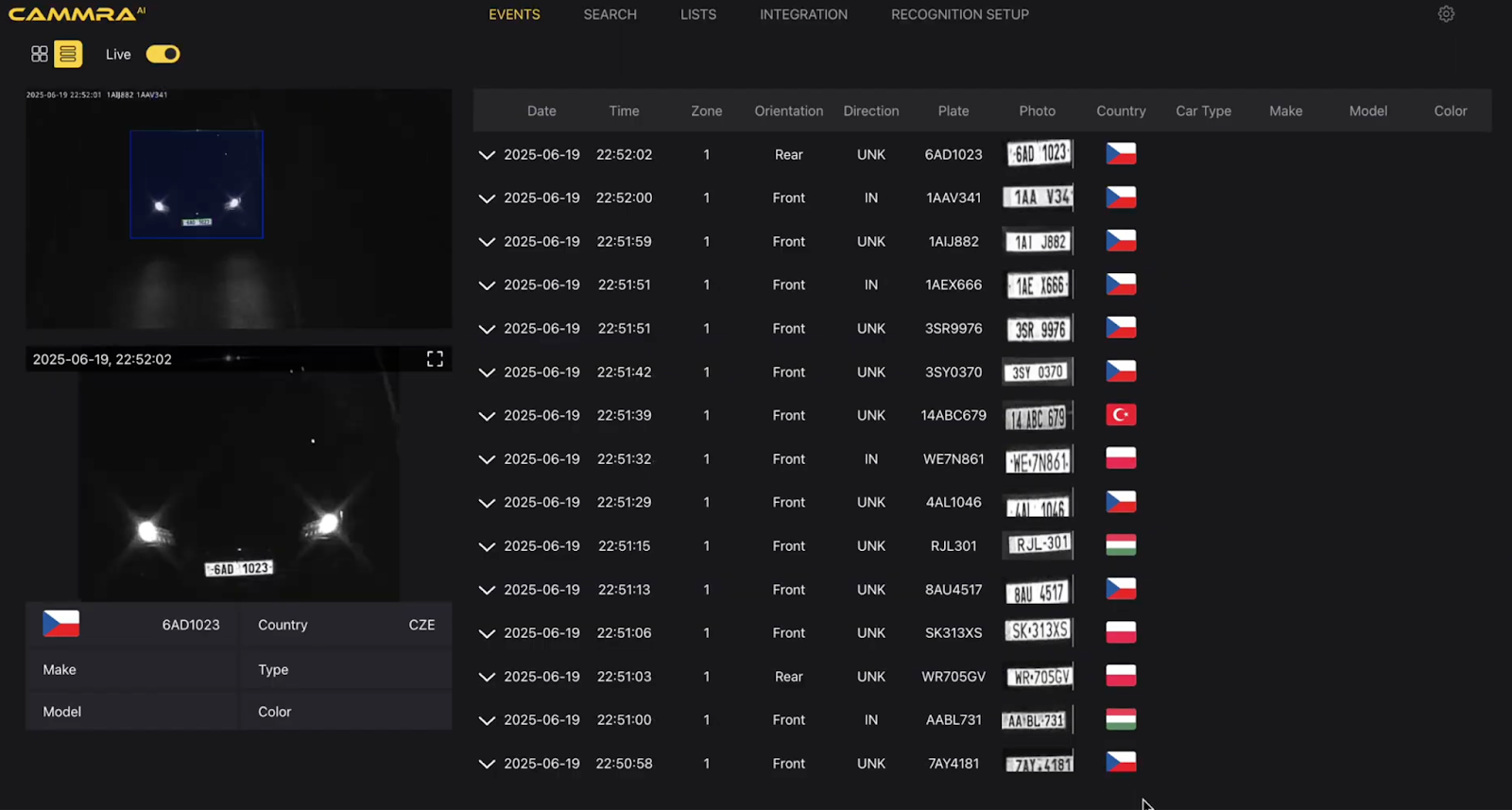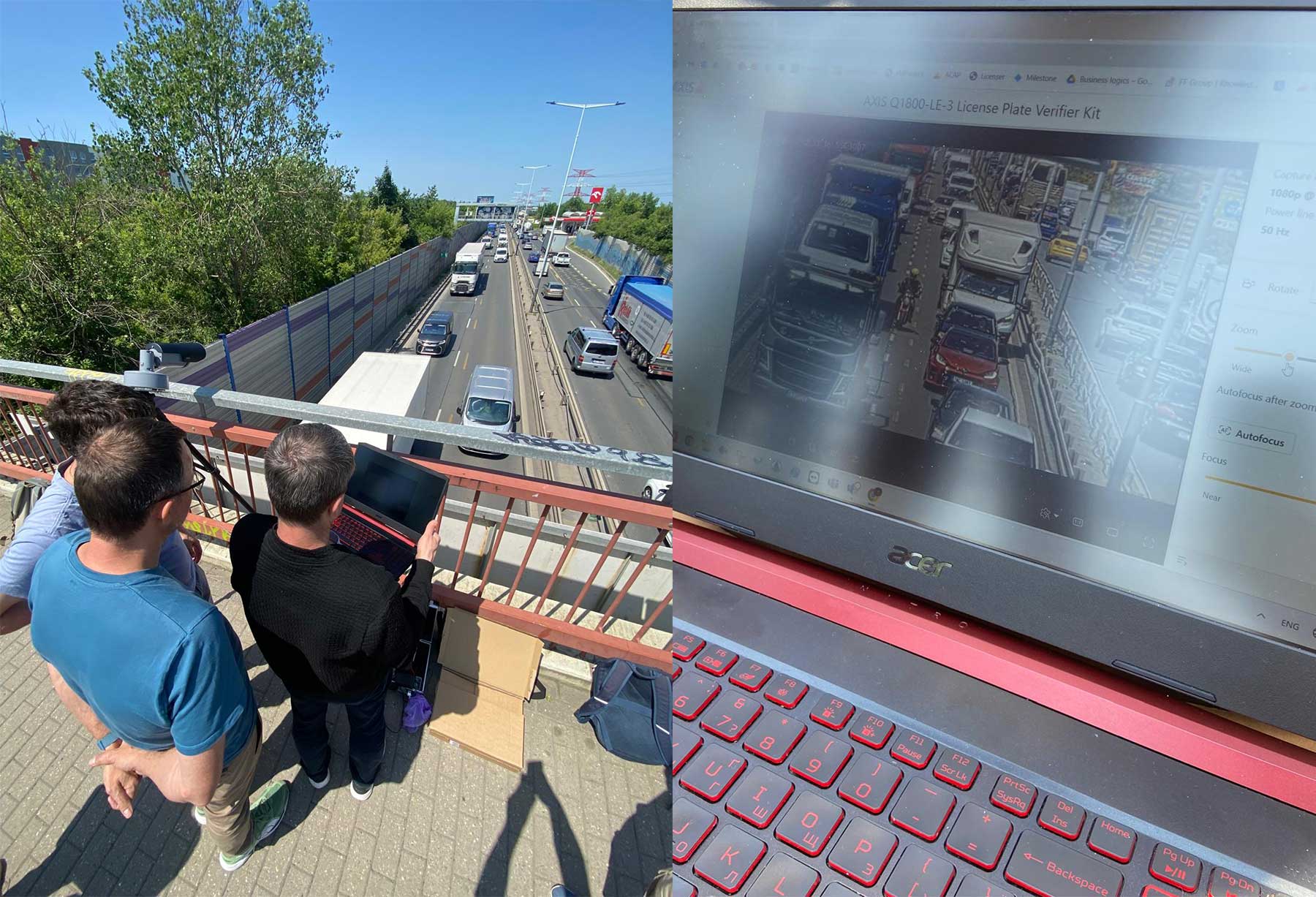
In real-world traffic surveillance, accuracy is everything. Whether for enforcement, analytics, or safety, a missed vehicle or a misread license plate can compromise both operational integrity and public trust.
In recent field tests, FF Group achieved a remarkable 99.78% vehicle capture rate and 97.34% license plate reading rate on live road traffic, under both standard daylight and also low-light night conditions, using the Axis Q1800-LE (Artpec 8) paired with CAMMRA AI. These results were not only consistent across multiple test environments, but also demonstrated stable performance with WDR (Wide Dynamic Range) both enabled and disabled - confirming the robustness and flexibility of the CAMMRA AI pipeline across complex lighting conditions. This is particularly notable, as WDR functionality was previously recommended to be switched off for LPR applications on Axis cameras. With this test, it has now been validated to operate reliably, regardless of whether WDR is active.
This article takes a deeper look at how these results were achieved and why CAMMRA AI, paired with Axis Artpec 8 cameras, sets a new standard in LPR precision at the edge.

While CAMMRA and CAMMRA AI are distinct products designed for different Axis chipsets, understanding their differences helps to highlight what makes CAMMRA AI so effective.
FF Group’s LPR stack has evolved in lockstep with Axis' processor advancements. Earlier generations like the Q1700-LE, built on Artpec 6, rely on CAMMRA, a CPU-based application offering solid performance within its resource limitations. In contrast, CAMMRA AI, designed for Artpec 8 and above, harnesses hardware-accelerated neural inference directly on the camera, enabling faster and more intelligent detection pipelines.
CAMMRA AI introduces a dual-detection logic, simultaneously recognizing both the vehicle object and its license plate. This duality not only reduces false positives (e.g., reading signs or logos) but boosts recognition confidence even under difficult angles or lighting conditions.
Unlike legacy symbol-first approaches, CAMMRA AI starts by locating plate-like rectangles in vehicle-bound regions, then runs multi-stage recognition including:
✔️ Symbol extraction
✔️ Neural-based OCR
✔️ Plate-country / plate type classifier
✔️ Semantic rule matching (e.g., format templates)
✔️Final confidence scoring and decision logic
Two camera systems were used:
The Q1800-LE was tested in both WDR ON and WDR OFF. Notably, CAMMRA AI’s performance held consistently high in both configurations, confirming that the software is not dependent on WDR to achieve optimal capture and recognition. However in some scenarios, using WDR might be beneficial, as it allows increased gain, which brings more details and brighter image.
Remote calibration was performed by FF Group’s in-house LPR specialist, ensuring both objective tuning and field-valid camera alignment.
The comparison between legacy CAMMRA and next-gen CAMMRA AI reveals just how far the system has evolved.

These results establish that CAMMRA AI can be confidently deployed in diverse lighting conditions, without needing to depend on WDR for reliability. This flexibility is especially critical for integrators and operators deploying systems across regions where lighting consistency can't be guaranteed.

One of the most revealing validations came from a scaled-up night test, providing both insight and opportunity for refinement.
The Q1800-LE running CAMMRA AI was evaluated in a comprehensive night test involving 452 real-world vehicles under variable lighting and high-speed traffic conditions. The results were remarkable:
CAMMRA AI processes every available frame until a vehicle is detected. Once detection occurs, the system enables the recognition pipeline – a smart balance between efficiency and redundancy.
While the system proved resilient, a total of 11 reading errors were noted during the test. After thorough analysis, FF Group engineers determined that 9 of these 11 errors were correctable. This prompted targeted updates to the symbol recognition engine.

The refinement process included:
This multi-layered recognition pipeline ensures CAMMRA AI is not only fast but also capable of handling real-world image distortions like dirt, glare, and font irregularities. These updates translated directly into improved reading reliability and reduced misclassification rates.
CAMMRA AI no longer depends on isolated symbol reads alone. Its object-to-semantic matching pipeline allows for both intelligent corrections and confident rejections of non-plates.
This test serves not only as a performance milestone but as a feedback loop — validating CAMMRA AI’s resilience while directly contributing to its continued improvement.
The results confirm what FF Group set out to achieve: exceptionally high license plate recognition accuracy under real-world conditions - including challenging environments like high-speed traffic, low light, and variable visibility.
With its edge-optimized architecture, CAMMRA AI consistently captured passing vehicles and accurately recognized plates, even without manual post-processing or artificial lighting enhancements. The system’s dual detection logic, symbol refinement, and semantic filtering allowed it to minimize false positives and correct edge-case errors that often trip up conventional LPR solutions.
These results demonstrate that precision is not the result of ideal settings, but of robust software design. CAMMRA AI’s reliability is rooted in its internal decision-making architecture - not in reliance on external conditions or narrow configuration presets.
For integrators, municipalities, and safety solution providers, this means one thing: confidence in deployment, regardless of environment.